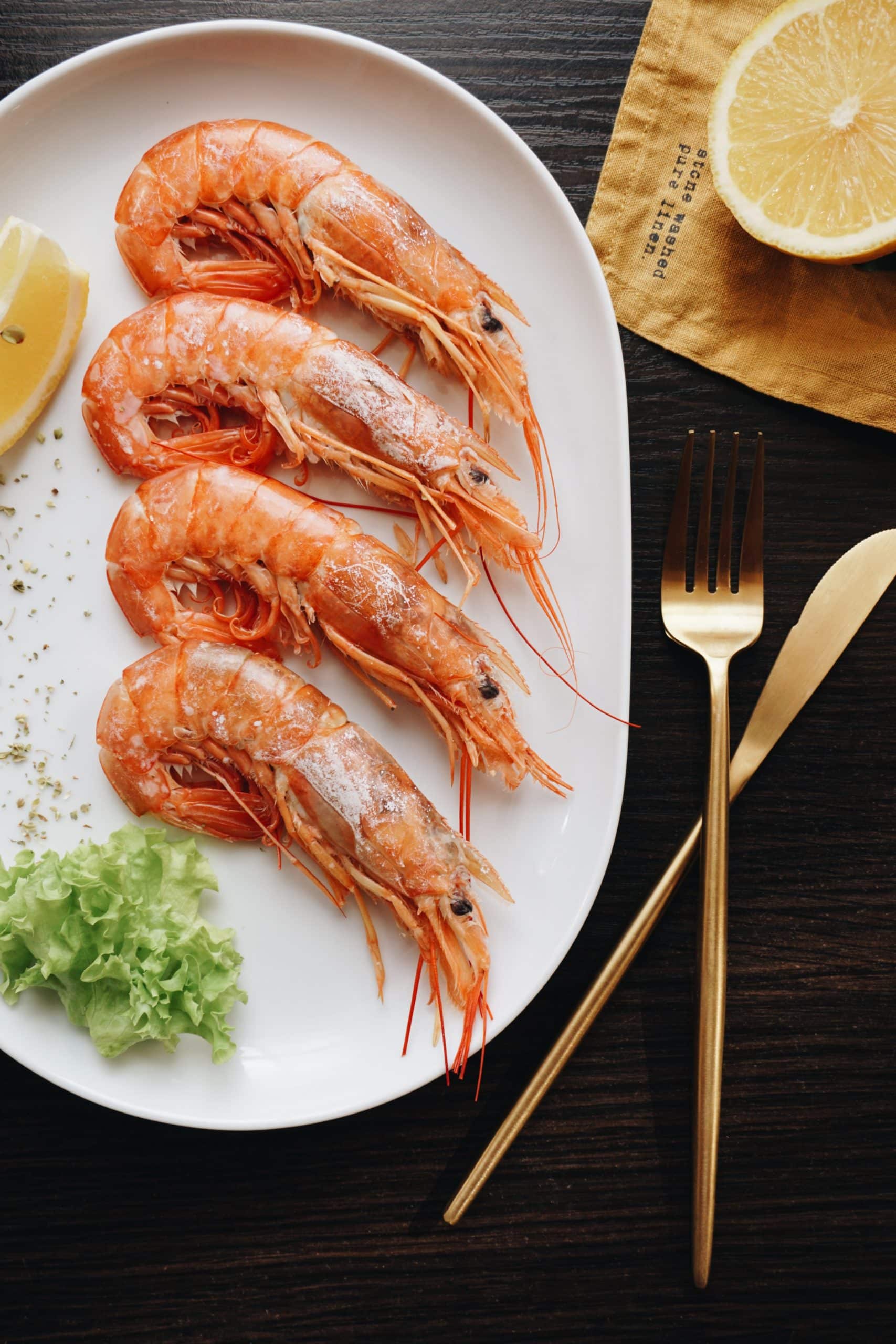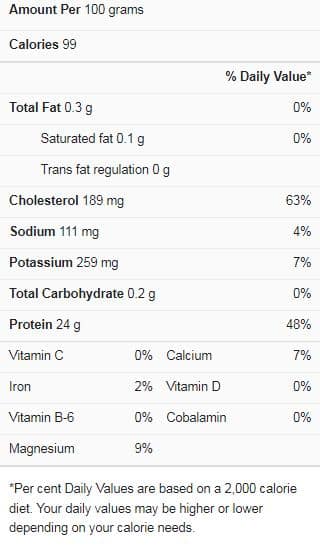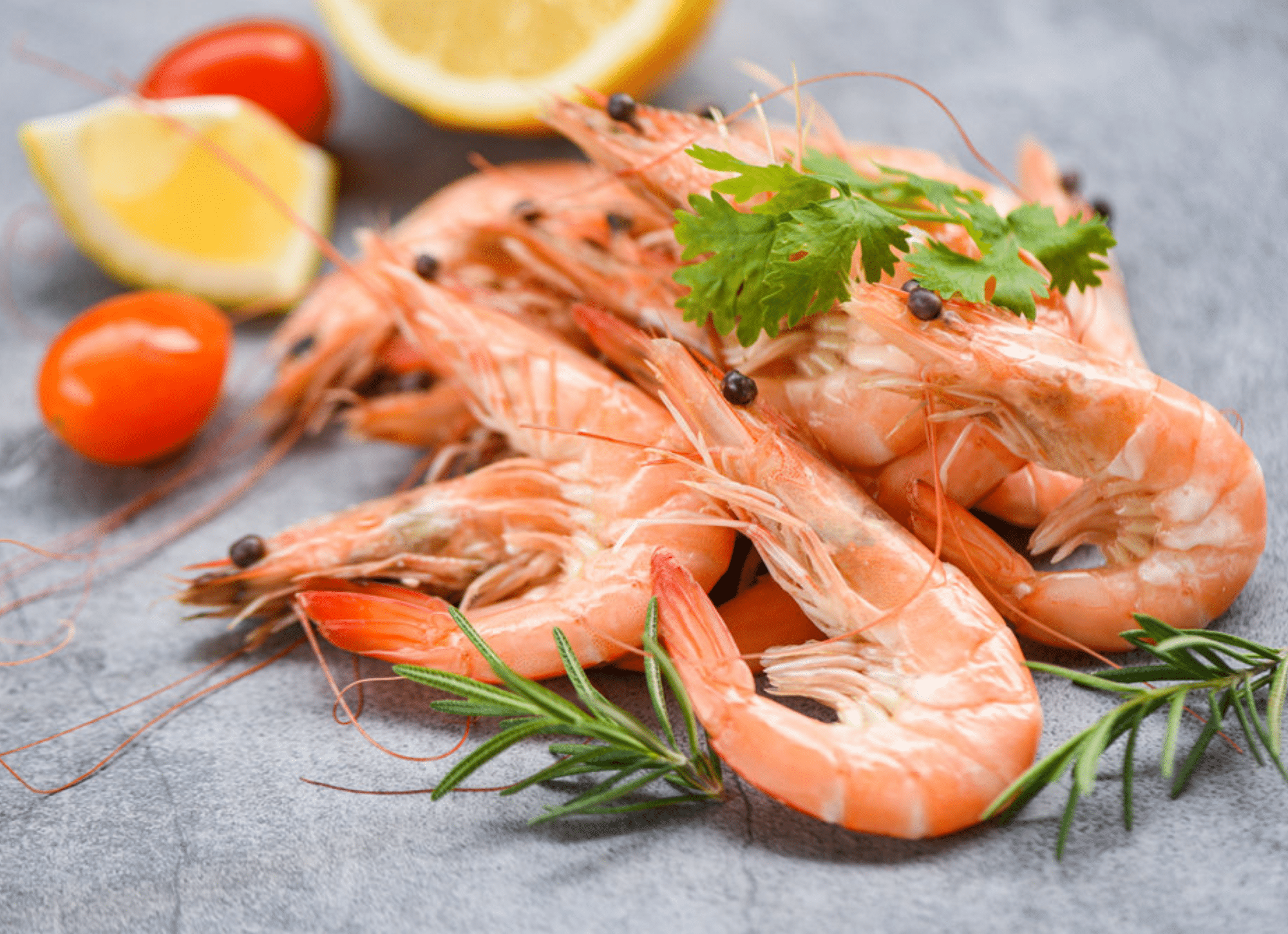Whether you’re making shrimp cocktail or scampi, the biggest worry is overcooking or undercooking the seafood. And while the former results in a chewy, rubbery dish, the latter can expose you to pathogenic risks at consumption. And since we’re particular about how our shrimp recipes come out, we tend to walk this line with caution. But there’s an easy way to go about cooking shrimp to the perfect doneness.

Shrimp nutrition facts

Tips for perfectly cooked shrimp
Ironically, the tricks to being sure about shrimp doneness aren’t so complicated;
Buy the right shrimp
If you’re lucky to have freshly caught shrimp sold around you, be sure it’s genuinely fresh. The shrimp should look translucent with a grey shell and a bit of firmness. It should also be free of any fishy or sulfuric odor.
But if you can only find frozen shrimp, it’s still a good choice. Just make sure it’s free of artificial preservatives by reading the fine print on the package. Frozen shrimp cook just as well as fresh ones, and they quickly thaw when left in the fridge overnight.
Keep the sizes consistent
When you have shrimp of different sizes in one pan, chances are they won’t cook simultaneously. So, avoid this by only cooking shrimp of the same size. Another good option is selecting packages that offer them at ‘number per pound.’ This parameter means you’ll find a given number of shrimp in each pound of the box. And most times, said shrimp are about the same size.
View this post on Instagram
Deveined Shrimp is Best
It’s also best that the shrimp you buy are deveined. This suggestion offers two advantages. First, you’re saved the trouble of deveining (removing the gut lining) yourself. And second, the cavity created by the process allows the shrimp to cool faster. And since deveined shrimp have the shells removed, cooking time is further reduced.
Keep an eye out
To make sure it hits the perfect doneness, you need to look out when you cook shrimp. The reason is that shrimp exhibits physical changes to determine the doneness in color and texture.
Telling when shrimp is cooked
As you cook shrimp, you’ll notice various changes, which tell you when it’s ready to be taken down.
View this post on Instagram
By Color and Shape
In its raw state, shrimp is gray with a translucent texture. But as you cook it, the color changes to an opaque white and will exhibit some accents of red and pink. And sometimes, the shape will almost form an ‘O’ because shrimp curls as it cooks.
By temperature
If you wish to be entirely particular about when shrimp is Cooked, you can also consider checking the temperature. By approved health standards, shrimp is fully cooked when it reaches an internal temperature of 140F. You could determine this factor by sticking a meat thermometer into the thickest part of the shrimp.
Knowing shrimp doneness by cooking methods
The different methods of preparing shrimp can also help you stay true to the proper doneness. And because each technique comes with its required steps, you’ll have to pay attention to them if you want to get it right.
Boiling- Only put the shrimp in the water when it has reached a boil. And remove it once you notice the water is about to boil again, then plunge it in ice water, so it stops cooking. This method works best if you’re serving the shrimp as it is, like in a shrimp cocktail. But if you’re cooking it as part of a hot liquid recipe, put the shrimp at the very end instead. That way, the carryover heat will cook the shrimp to the proper doneness as you take the pot down.
Sautéing- For stir-fried shrimp, cooking at medium-high heat is the best way to hit the perfect doneness. And when sautéed for one to one-and-a-half minute, take it down and transfer it to a plate. The residual heat will complete the shrimp’s cooking as it rests. And if you’re sautéing it vegetables, allow it to go last and when the vegetables are boiling.
Grilling- By this method, shrimp takes about two minutes to cook on each side. But if you’re making them in skewers, cook the shrimp alone and not mixed with other ingredients. The reason is shrimp cooks at a different rate compared to vegetables and other meats.
You can also find more on knowing when shrimp is done in this video.
